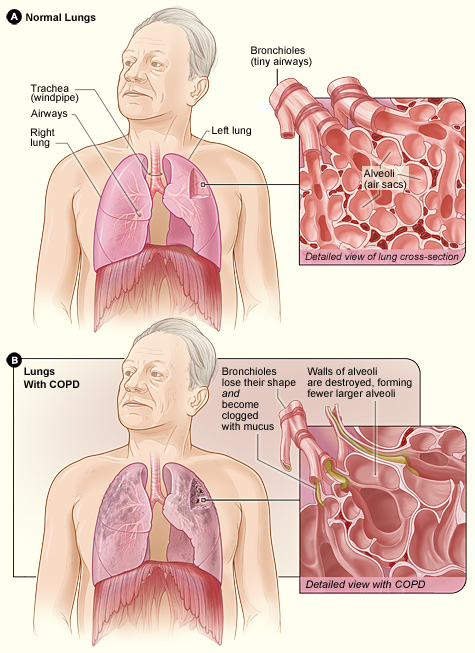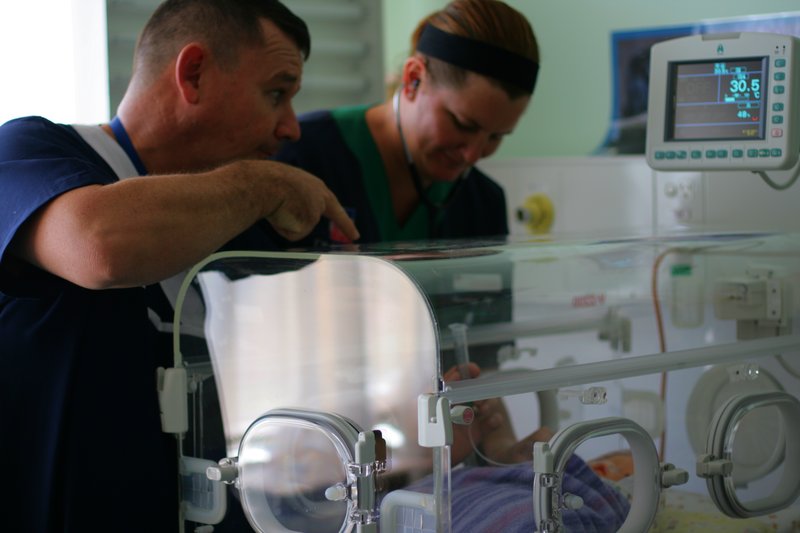|
Positive Pressure Ventilation
Positive airway pressure (PAP) is a mode of Modes of mechanical ventilation, respiratory ventilation used in the treatment of sleep apnea. PAP ventilation is also commonly used for those who are critically ill in hospital with respiratory failure, in newborn infants (neonates), and for the prevention and treatment of atelectasis in patients with difficulty taking deep breaths. In these patients, PAP ventilation can prevent the need for tracheal intubation, or allow earlier extubation. Sometimes patients with neuromuscular diseases use this variety of ventilation as well. CPAP is an acronym for "continuous positive airway pressure", which was developed by Dr. George Gregory and colleagues in the neonatal intensive care unit at the University of California, San Francisco. A variation of the PAP system was developed by Professor Colin Sullivan (physician), Colin Sullivan at Royal Prince Alfred Hospital in Sydney, Australia, in 1981. The main difference between BPAP and CPAP machines ... [...More Info...] [...Related Items...] OR: [Wikipedia] [Google] [Baidu] |
Orinasal Mask
An orinasal mask, oro-nasal mask or oral-nasal mask is a breathing mask that covers the mouth and the nose only. It may be a complete independent item, as an oxygen mask, or on some anaesthetic apparatuses, or it may be fitted as a component inside a fullface mask on underwater breathing apparatus, a gas mask or an industrial respirator to reduce the amount of dead space. It may be designed for its lower edge to seal on the front of the lower jaw or to go under the chin. An orinasal mask may carry a filter for ambient air, or be supplied from a user-carried breathing gas supply or a remote gas supply using a supply hose. Another application is the resuscitation pocket mask, which is used as an infection barrier between the rescuer and a non-breathing casualty for expired air resuscitation. Applications Stand-alone orinasal units *Hyperbaric oxygen provision: The built-in breathing systems (BIBS) used for providing oxygen for treatment and accelerated decompression i ... [...More Info...] [...Related Items...] OR: [Wikipedia] [Google] [Baidu] |
Chronic Obstructive Pulmonary Disease
Chronic obstructive pulmonary disease (COPD) is a type of progressive lung disease characterized by chronic respiratory symptoms and airflow limitation. GOLD defines COPD as a heterogeneous lung condition characterized by chronic respiratory symptoms (shortness of breath, cough, sputum production or exacerbations) due to abnormalities of the airways (bronchitis, bronchiolitis) or alveoli ( emphysema) that cause persistent, often progressive, airflow obstruction. The main symptoms of COPD include shortness of breath and a cough, which may or may not produce mucus. COPD progressively worsens, with everyday activities such as walking or dressing becoming difficult. While COPD is incurable, it is preventable and treatable. The two most common types of COPD are emphysema and chronic bronchitis and have been the two classic COPD phenotypes. However, this basic dogma has been challenged as varying degrees of co-existing emphysema, chronic bronchitis, and potentially significan ... [...More Info...] [...Related Items...] OR: [Wikipedia] [Google] [Baidu] |
Preeclampsia
Pre-eclampsia is a multi-system disorder specific to pregnancy, characterized by the new onset of high blood pressure and often a significant amount of protein in the urine or by the new onset of high blood pressure along with significant end-organ damage, with or without the proteinuria. When it arises, the condition begins after 20 weeks of pregnancy. In severe cases of the disease there may be red blood cell breakdown, a low blood platelet count, impaired liver function, kidney dysfunction, swelling, shortness of breath due to fluid in the lungs, or visual disturbances. Pre-eclampsia increases the risk of undesirable as well as lethal outcomes for both the mother and the fetus including preterm labor. If left untreated, it may result in seizures at which point it is known as eclampsia. Risk factors for pre-eclampsia include obesity, prior hypertension, older age, and diabetes mellitus. It is also more frequent in a woman's first pregnancy and if she is carrying twins. T ... [...More Info...] [...Related Items...] OR: [Wikipedia] [Google] [Baidu] |
Airway
The respiratory tract is the subdivision of the respiratory system involved with the process of conducting air to the alveoli for the purposes of gas exchange in mammals. The respiratory tract is lined with respiratory epithelium as respiratory mucosa. Air is breathed in through the nose to the nasal cavity, where a layer of nasal mucosa acts as a filter and traps pollutants and other harmful substances found in the air. Next, air moves into the pharynx, a passage that contains the intersection between the oesophagus and the larynx. The opening of the larynx has a special flap of cartilage, the epiglottis, that opens to allow air to pass through but closes to prevent food from moving into the airway. From the larynx, air moves into the trachea and down to the intersection known as the carina that branches to form the right and left primary (main) bronchi. Each of these bronchi branches into a secondary (lobar) bronchus that branches into tertiary (segmental) bronchi, that ... [...More Info...] [...Related Items...] OR: [Wikipedia] [Google] [Baidu] |
Asthma
Asthma is a common long-term inflammatory disease of the airways of the lungs. It is characterized by variable and recurring symptoms, reversible airflow obstruction, and easily triggered bronchospasms. Symptoms include episodes of wheezing, coughing, chest tightness, and shortness of breath. A sudden worsening of asthma symptoms sometimes called an 'asthma attack' or an 'asthma exacerbation' can occur when allergens, pollen, dust, or other particles, are inhaled into the lungs, causing the bronchioles to constrict and produce mucus, which then restricts oxygen flow to the alveoli. These may occur a few times a day or a few times per week. Depending on the person, asthma symptoms may become worse at night or with exercise. Asthma is thought to be caused by a combination of genetic and environmental factors. Environmental factors include exposure to air pollution and allergens. Other potential triggers include medications such as aspirin and beta blockers. Diag ... [...More Info...] [...Related Items...] OR: [Wikipedia] [Google] [Baidu] |
COPD
Chronic obstructive pulmonary disease (COPD) is a type of progressive lung disease characterized by chronic respiratory symptoms and airflow limitation. GOLD defines COPD as a heterogeneous lung condition characterized by chronic respiratory symptoms (shortness of breath, cough, sputum production or exacerbations) due to abnormalities of the airways (bronchitis, bronchiolitis) or alveoli (emphysema) that cause persistent, often progressive, airflow obstruction. The main symptoms of COPD include shortness of breath and a cough, which may or may not produce mucus. COPD progressively worsens, with everyday activities such as walking or dressing becoming difficult. While COPD is incurable, it is preventable and treatable. The two most common types of COPD are emphysema and chronic bronchitis and have been the two classic COPD phenotypes. However, this basic dogma has been challenged as varying degrees of co-existing emphysema, chronic bronchitis, and potentially significant ... [...More Info...] [...Related Items...] OR: [Wikipedia] [Google] [Baidu] |
Airway Obstruction
Airway obstruction is a blockage of respiration in the airway that hinders the free flow of air. Airway obstructions can occur either in the upper airway or lower airway. The upper airway consists of the nose, throat, and larynx. The lower airway comprises the trachea, bronchi, and bronchioles. Airway obstruction is a life-threatening condition and requires urgent attention. Upper airway obstruction Causes The causes of upper airway obstructions can be acute or chronic. Acute causes of upper airway obstruction include foreign body aspiration, blunt trauma to the neck, infection, and swelling due to allergies or other inflammatory conditions. In children, viral infections such as croup or epiglottitis are frequent causes. Adults are more likely to experience obstruction from enlargement of the tonsils or vocal cord paralysis. Obstructive sleep apnea is the most common chronic cause of upper airway obstruction. Symptoms Stridor is a high-pitched sound which occurs d ... [...More Info...] [...Related Items...] OR: [Wikipedia] [Google] [Baidu] |
Congestive Cardiac Failure
Heart failure (HF), also known as congestive heart failure (CHF), is a syndrome caused by an impairment in the heart's ability to fill with and pump blood. Although symptoms vary based on which side of the heart is affected, HF typically presents with shortness of breath, excessive fatigue, and bilateral leg swelling. The severity of the heart failure is mainly decided based on ejection fraction and also measured by the severity of symptoms. Other conditions that have symptoms similar to heart failure include obesity, kidney failure, liver disease, anemia, and thyroid disease. Common causes of heart failure include coronary artery disease, heart attack, high blood pressure, atrial fibrillation, valvular heart disease, excessive alcohol consumption, infection, and cardiomyopathy. These cause heart failure by altering the structure or the function of the heart or in some cases both. There are different types of heart failure: right-sided heart failure, which affects the rig ... [...More Info...] [...Related Items...] OR: [Wikipedia] [Google] [Baidu] |
Coronary Care Unit
A coronary care unit (CCU) or cardiac intensive care unit (CICU) is a hospital ward specialized in the care of patients with heart attacks, unstable angina, cardiac dysrhythmia and (in practice) various other cardiac conditions that require continuous monitoring and treatment. Characteristics The main feature of coronary care is the availability of telemetry or the continuous monitoring of the cardiac rhythm by electrocardiography. This allows early intervention with medication, cardioversion or defibrillation, improving the prognosis. As arrhythmias are relatively common in this group, patients with myocardial infarction or unstable angina are routinely admitted to the coronary care unit. For other indications, such as atrial fibrillation, a specific indication is generally necessary, while for others, such as heart block, coronary care unit admission is standard. Utilization In the United States, cardiac conditions accounted for eight of the eighteen conditions and procedure ... [...More Info...] [...Related Items...] OR: [Wikipedia] [Google] [Baidu] |
High-dependency Unit
A high-dependency unit (HDU) is an area in a hospital, usually located close to the intensive care unit, where patients can be cared for more extensively than on a normal ward, but not to the point of intensive care. It is appropriate for patients who have had major surgery and for those with single-organ failure. Many of these units were set up in the 1990s when hospitals found that a proportion of patients was requiring a level of care that could not be delivered in a normal ward setting. This is thought to be associated with a reduction in mortality. Patients may be admitted to an HDU bed because they are at risk of requiring intensive care admission, or as a step-down between intensive care and ward-based care. In 2000 the UK Department of Health issued the ''Comprehensive Critical Care'' report, which set out the number of high dependency ("level 2") beds a hospital should have to deliver care appropriately. By this time, two thirds of UK hospitals had beds identified as "hig ... [...More Info...] [...Related Items...] OR: [Wikipedia] [Google] [Baidu] |
Intensive Care Unit
An intensive care unit (ICU), also known as an intensive therapy unit or intensive treatment unit (ITU) or critical care unit (CCU), is a special department of a hospital or health care facility that provides intensive care medicine. An intensive care unit (ICU) was defined by the task force of the World Federation of Societies of Intensive and Critical Care Medicine as "an organized system for the provision of care to critically ill patients that provides intensive and specialized medical and nursing care, an enhanced capacity for monitoring, and multiple modalities of physiologic organ support to sustain life during a period of life-threatening organ system insufficiency." Patients may be referred directly from an emergency department or from a ward if they rapidly deteriorate, or immediately after surgery if the surgery is very invasive and the patient is at high risk of complications. History In 1854, Florence Nightingale left for the Crimean War, where triage was used ... [...More Info...] [...Related Items...] OR: [Wikipedia] [Google] [Baidu] |






